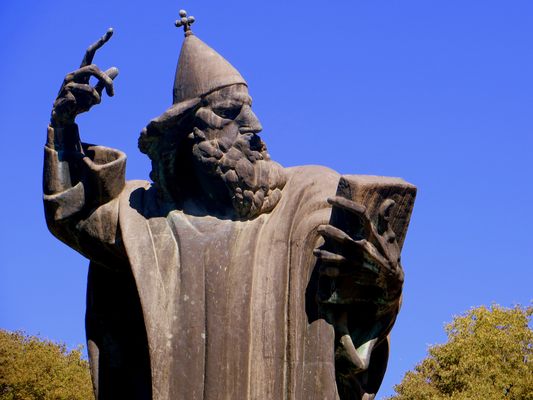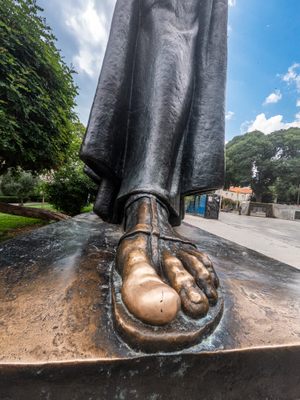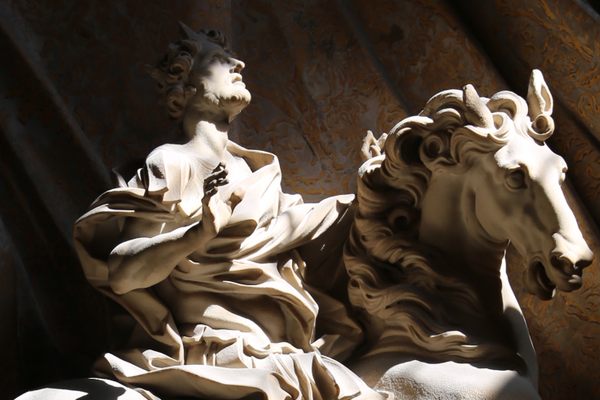About
Gregory of Nin was a bishop in the medieval Croatian capital of Nin. Today he is remembered for defying the Catholic church in Rome, which opposed his call to introduce the national language into religious services in 926 so that worshippers would better understand the word of God. The church remained adamant that all services must be delivered in Latin, with the teachings of Christ mediated through the priesthood.
Gregory became an important figure for Croatians and is now regarded as a historical defender of Croatian culture, language, and statehood. Sculptures of him can be found in several towns and cities throughout the Balkan country. The city of Split is home to a particularly huge example, rising up to a height of 28 feet (8.5 meters), designed in 1929 by one of Croatia’s most important artists, Ivan Meštrović.
This towering monument was first erected in the center of Diocletian’s Palace in Split, before being moved by occupying Italian forces in 1941 during World War II. Finally, in 1954, it was moved to its current location just outside the city’s Golden Gate.
Gregory is deep bronze in color, apart from one of his big toes, which has turned golden by decades of constant rubbing. Croatians are taught from an early age that rubbing Gregory’s big toe will grant them their wish, and he has been credited with births, weddings, and riches. Each day hundreds of people stop to rub the toe, before venturing through the Golden Gate into the walled enclosure of the city.
Related Tags
Know Before You Go
The Gregory of Nin statue (Grgur Ninski) is located in the heart of Split near the city's famous Golden Gate.
Balkans Road Trip: Serbia, Croatia & Bosnia and Herzegovina
Traverse the beauty and history of the Balkans through locals' stories.
Book NowCommunity Contributors
Added By
Published
September 13, 2018





























































